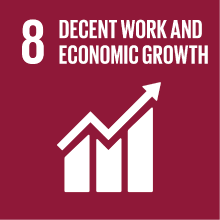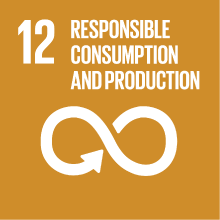CINEMA AND PHOTOGRAPHY
- Academic year
- 2024/2025 Syllabus of previous years
- Official course title
- CINEMA E FOTOGRAFIA
- Course code
- LM6520 (AF:518053 AR:288146)
- Teaching language
- Italiano
- Modality
- On campus classes
- ECTS credits
- 6
- Degree level
- Master's Degree Programme (DM270)
- Academic Discipline
- L-ART/06
- Period
- 2nd Term
- Course year
- 1
- Moodle
- Go to Moodle page
Contribution of the course to the overall degree programme goals
Expected learning outcomes
Pre-requirements
Contents
More specifically, the first traces the history of cinema exploring film festivals emphasizing their crucial role i.e. when identifying different stylistic canons, when defining the success of certain artistic movements (such as the Nouvelle Vague), when identifying the paradigms through which non-Western cinematography are received, when defining the specific relationship between industrial, cultural aspects as well as habits peculiar to the art of filmmaking, when defining spectatorship but also the relationship between festivals and the political and social history of given countries. Festivals are also excellent observation point for reflecting upon the changes that the advent of digital technology has imposed on the media ecosystem and on the position occupied by cinema in this ecosystem. This is due to a different, more converging and pervasive mode of circulation and fruition of audio-visual artefacts in relation to vision platforms on one hand and the sphere of art exhibitions on the other.
Referral texts
2. Maria Francesca Piredda, "Organizzazione, strategie di posizionamento e sostenibilità dei film festival italiani" in ID, "I festival del cinema in Italia. Forme e pratiche dalle origini al Covid-19", Roma, Carocci, 2022, pp 91-120.
3. A selection of critical texts uploaded on the course moodle page.
Students who have never attended courses of film history during their Bachelor’s or Master’s degree course are suggested to read the following volume:
- Christian Uva, Vito Zagarrio (a cura di), “Le storie del cinema. Dalle origini al digitale”, Roma, Carocci, 2020.
(please note that the textbook is not part of the examination programme)
Assessment methods
MODALITY 1: Group Work
- Task: Preparation of a report dedicated to a film festival currently active in Italy, possibly starting from an "ethnographic" field activity (on-site visits, interviews with programmers and spectators, data and material collection). The report must be submitted in PDF format on Moodle at least four days before the exam roll call.
- Oral Interview: The group will discuss the report during the oral interview. Additionally, an individual interview will be conducted to verify knowledge of the topics covered in the lessons and present in the texts included in the examination bibliography.
- Assessment: The evaluation will consider 1/3 of the results from the report and 2/3 from the individual oral test.
MODALITY 2: Individual Project Work
- Task: Preparation of a creative project for the foundation of a new film festival according to criteria of cultural appeal and economic sustainability. The project must be submitted in PDF format four days before the exam date and discussed with the lecturer during the oral examination.
- Oral Examination: Knowledge of the topics covered in class and in the examination texts will be tested during the oral exam.
- Assessment: The evaluation will consider 1/3 of the results from the project work and 2/3 from the individual oral examination.
Assessment Criteria for Both Modalities
- The ability to critically apply the acquired knowledge to the case study presented (30%).
- The accuracy and depth of knowledge of the topics covered in lectures and in the examination texts, with particular attention to their historical and cultural dimensions (30%).
- Awareness of the mechanisms of discursive positioning and functioning (including managerial and organizational aspects) of the cultural artifacts studied (30%).
- Attention to the quality of the written and/or oral presentation (10%).
Grading Scale
- Grades 18-22: Awarded where the above-mentioned points reach a sufficient level.
- Grades 23-26: Awarded where the above-mentioned points reach a fair level.
- Grades 27-30: Awarded where the above-mentioned points reach an excellent level.
- Honours: Awarded where the above-mentioned points reach an outstanding level.
Type of exam
Teaching methods
Further information
Ca’ Foscari follows the Italian law (Law 17/1999; Law 170/2010) for the support and accommodation services available to students with disabilities or specific learning disabilities. If you have either a motor, visual, hearing or another disability (Law 17/1999), or a specific learning disorder (Law 170/2010) and you require support (classroom assistance, technological aids for carrying out exams or personalized exams, accessible format material, note retrieval, specialist tutoring as study support, interpreters or other), please contact the Disability and DSA office disabilita@unive.it.
2030 Agenda for Sustainable Development Goals
This subject deals with topics related to the macro-area "Circular economy, innovation, work" and contributes to the achievement of one or more goals of U. N. Agenda for Sustainable Development


